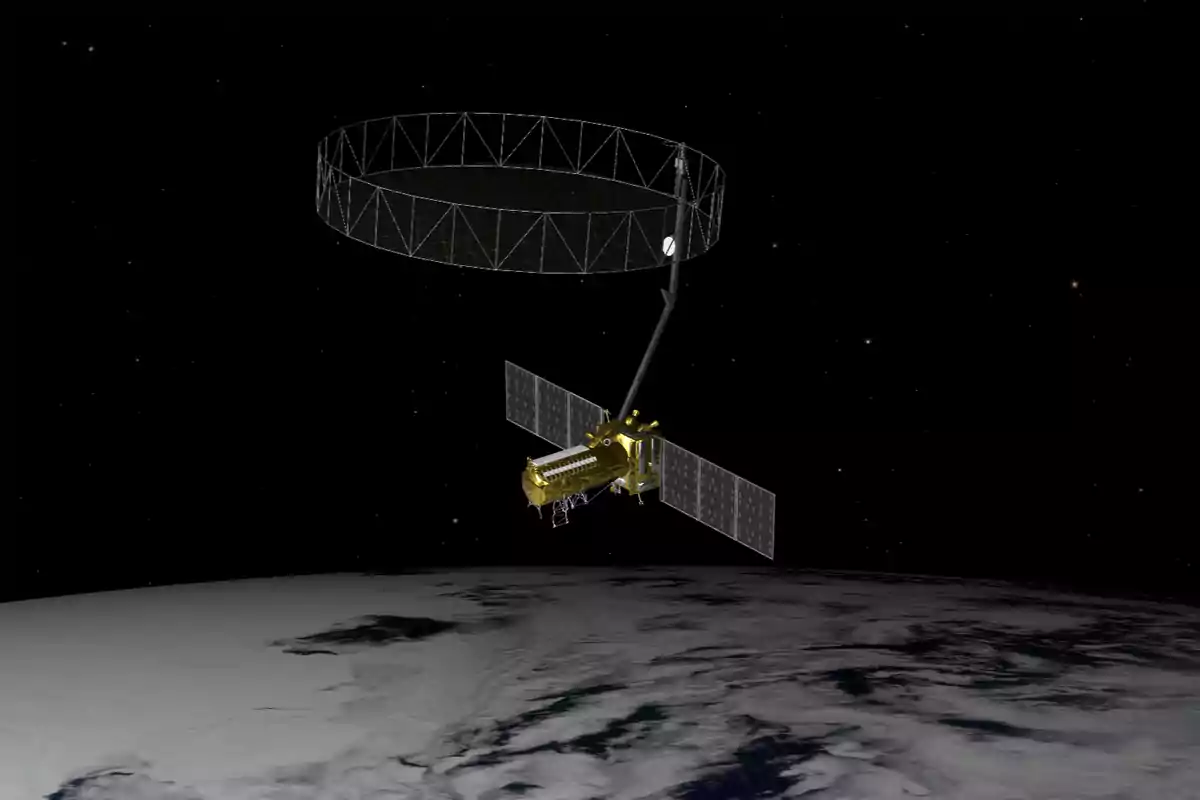NASA has taken an unexpected step that could change the way we observe our planet from space. In recent hours, the agency has revealed a breakthrough that had been in preparation for some time, but whose impact is already beginning to be felt. This is an ambitious mission, marked by unprecedented technical decisions and an unusual international collaboration.
For the first time, a satellite will use two different radar bands, L and S, to capture detailed images of Earth from space. This dual technology, never before applied in a mission of this kind, will allow scientists to observe everything from the movement of tectonic plates to subtle changes in ecosystems. In addition, the mission marks the beginning of the first satellite collaboration between NASA and the Indian Space Research Organization (ISRO), a unique international cooperation.

The technological milestone of the satellite in detail
The protagonist of this milestone is NISAR, an Earth observation satellite launched last month from southeastern India. Seventeen days after liftoff, the satellite has deployed in orbit its most complex component, a 39 ft. 4 in. (12 meters) wide reflector, the largest ever installed by NASA. This antenna is key to the operation of the synthetic aperture radar (SAR) system, which simulates a much larger antenna without the need for structures impossible to launch.
The deployment was carried out in phases. First, a 29 ft. 6 in. (9 meters) mast was extended to support the reflector, which until that moment had remained folded like an umbrella. Later, on August 15, small explosive bolts were activated to release the system and begin its expansion. The process, known as "blooming," ended when the antenna reached its final shape and position in space.
What changes will the new era of Earth observation bring?
With this antenna, NISAR will be able to generate images with a resolution of 32 ft. 10 in. (10 meters) per pixel, a precision that previously could only be achieved with ground-based antennas nearly 12.4 mi. (20 kilometers) long. This will allow scientists to monitor earthquakes, glaciers, volcanic eruptions, and ground movements around the world. It will also be key in areas such as agriculture, urban planning, disaster management, and ecosystem preservation.
The antenna, which weighs about 141 lbs. (64 kilos), is made up of a gold-coated metallic mesh supported by a complex structure of 123 struts. Its ultralight yet resistant design shows the level of engineering involved in this mission. NASA has explained that without this successful deployment, the radar systems couldn't operate with the necessary precision.
Overall, NISAR not only represents a remarkable scientific breakthrough, but also shows how space exploration is strengthened when there is cooperation between countries. This joint mission between the United States and India not only provides valuable data to better understand our planet, but also opens the door to future large-scale technological collaborations. Earth observation is entering a new era, and this satellite is at the forefront of that change.

